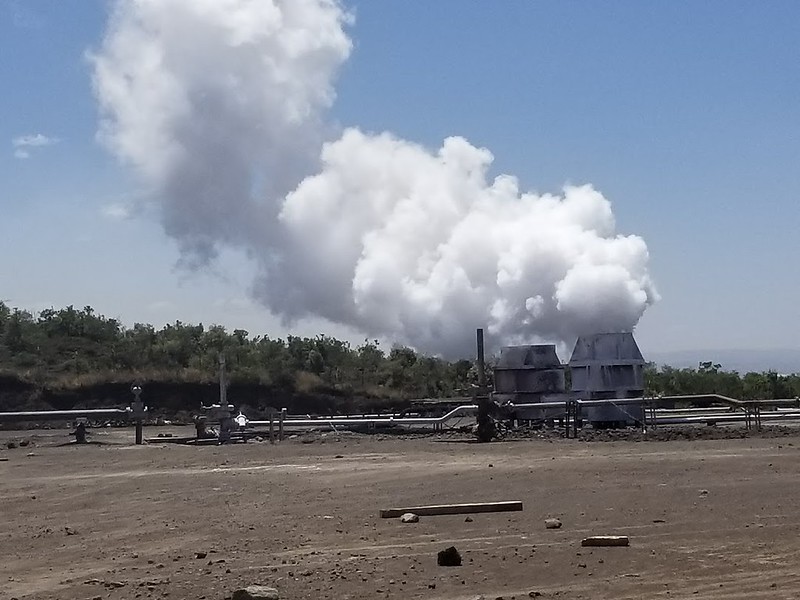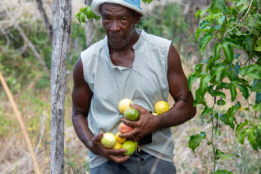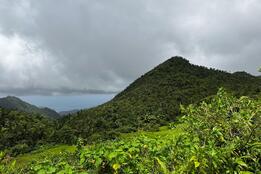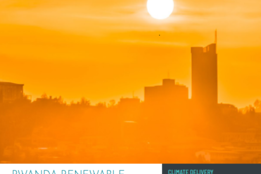Kenya has ambitions to generate 100% of its electricity from clean energy sources by 2030. That target is not far off: its current share of renewable energy powering its national grid is 90%, making it a leader among many countries aiming for similar outcomes. But as it hits the home stretch to closing that 10% gap, Kenya is learning much about grid flexibility, increasing its capacity through integrating variable renewables, and diversifying its energy matrix.
Kenya has set ambitious clean energy targets:
- 100% clean energy on the Kenyan grid by 2030
- 100% clean cooking by 2028
- Reach net zero by 2050
Kenya is on track to meet these goals. But in the final push, electricity grid stability and flexibility are critical hurdles to clear. Erastus Kiruja is Manager, Power Systems at the Kenya Power and Lighting Company (KPLC), a power distribution utility and the sole buyer of electricity generated in Kenya. The company is also responsible for power system security in the country. With the clean energy target in sight, there are a few daunting challenges, Mr. Kiruja says, especially as the Kenyan grid absorbs more variable renewable energy (VRE) such as solar and wind.
Mr. Kiruja shared his remarks during a technical workshop hosted by CIF and the Government of Tunisia in Hammamet where more than 40 representatives from 25 countries met as part of the CIF’s Renewable Energy Integration Learning Platform. The learning platform facilitates the exchange of knowledge and experiences between countries and regions as well as drawing on the expertise of the energy specialists, the private sector, and multilateral development banks.

A leader in progress to 100% clean energy generation
Earlier this year, Kenya received $70 million in concessional funding through CIF’s Renewable Energy Integration Program (REI), set up to support developing countries in upgrading and adapting their national energy system to clean energy sources. The country currently generates about 45% percent of its energy from geothermal energy and 19% from hydropower – the mainstay of its energy generation. Its solar and wind capacity currently account for 17% and 3%; the remainder of its energy use is supplied by a mix of other sources including thermal (fossil fuel-based) energy sources. CIF investments in 2011 also supported the growth of Kenya’s geothermal capacity through CIF's Scaling-Up Renewable Energy Program (SREP). Below is an image of the Menengai Geothermal Project supported by CIF and its implementing partner, the African Development Bank (AfDB).

As stated in its REI Investment Plan approved earlier this year, the Kenyan government sees a “unique opportunity in the near future to meet its electricity needs almost entirely from green energy sources and at affordable costs.” This includes prioritizing grid flexibility and reliability – as well as finding technological solutions such as battery energy storage systems to capture surplus energy generated but not dispatched. As the investment plan sets out:
“Generation surpluses from geothermal and wind generation at night are not dispatched because of inadequate demand during those hours, even as the country struggles to meet shoulder and peak loads during evening hours. Kenya’s REI program entails the adoption of enabling technologies to scale up renewable energy uptake on the grid, with the aim of enhancing system design and operation, increasing competition and allowing generators open access to the power market, and enhancing infrastructure to be renewable energy-ready.”
As Erastus Kiruja points out, power utilities such as the Kenya Power and Lighting Company are not only learning much about the system flexibility but also how to better manage VRE onboarding, especially as third-party energy producers enter the market.
As Kenya pushes forward to its 2030 target, Mr. Kiruja says tapping into experts at the Hammamet workshop in Tunisia, and drawing on the REI Learning Platform has reassured him that Kenya can be a leader in supporting other countries in their renewable energy integration efforts. But he also took a few lessons and ideas that he says will support his efforts in solving some of the energy integration challenges Kenya’s faces.
CIF’s REI Learning Platform, launched in June 2023, was set up to strengthen the capacities and readiness of developing countries looking to advance renewable energy integration. Through exchanging and generating new knowledge as it did in Tunisia, the learning platform brings together countries to share diverse experiences and creates closer linkages with in-country implementation.
Watch Mariel Juarez Olvera of the Inter-American Development Bank, Jimmy Pannett, Co-lead of CIF’s Renewable Energy Integration Program, and Javier Campillo, Colombia’s Vice Minister of Energy, share their thoughts on how the REI Learning Platform provides a robust space for exchange:
Building on the Hammamet meeting, the next REI Learning Platform event will have a regional focus. Join us for Integrating Renewables through Regional Initiatives on October 8, 2024 by registering here. Also see our story on Colombia’s renewable integration journey: Project Spotlight: How Colombia is leading and learning on renewable energy integration.




